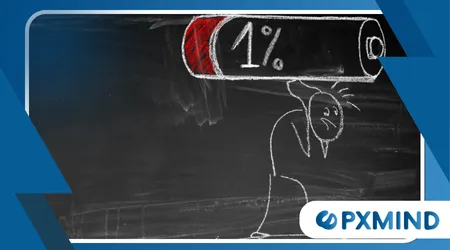Produttività senza burnout: trovare l'equilibrio

Produttività senza burnout. Conosciamo tutti la sensazione di dover andare avanti. Controlliamo le email a tarda notte, sacrifichiamo i weekend e ci ritroviamo costantemente incollati ai nostri dispositivi.
Annunci
Ma questo ritmo incessante porta all'esaurimento, non al successo. È un'idea sbagliata pensare che più ore equivalgano a più produttività.
La vera efficacia deriva da uno sforzo concentrato e di alta qualità, intervallato da periodi di riposo deliberati.
Immaginatelo come un maratoneta che si allena intensamente ma comprende il ruolo fondamentale dei giorni di recupero.
Senza quel riposo, le loro prestazioni diminuiscono e rischiano infortuni. Nella nostra vita professionale, il rischio è il burnout.
L'obiettivo non è solo essere impegnati, ma essere efficaci. Questo significa distinguere tra compiti che producono risultati concreti e quelli che semplicemente richiedono tempo.
Si tratta di sfruttare al meglio la nostra energia, non solo il nostro tempo.
Conoscendo i nostri ritmi personali e gli orari in cui rendiamo al meglio, possiamo programmare il lavoro più impegnativo quando siamo naturalmente al meglio.
Il risultato è un ciclo di rinnovamento, non di esaurimento. Questo è il fulcro di un progresso sostenibile e significativo.
I nuovi ritmi del lavoro
La tradizionale giornata lavorativa dalle 9 alle 17, reliquia dell'era industriale, è ormai un lontano ricordo per molti. Siamo entrati in una nuova era in cui il lavoro è più fluido.
Questa flessibilità, pur offrendo libertà, rappresenta anche una sfida.
I confini tra tempo professionale e personale possono sfumare, rendendo ancora più facile ricadere nelle vecchie abitudini di superlavoro.
Una delle strategie più efficaci è il time blocking, ma con un tocco moderno. Invece di limitarci a programmare riunioni, ora blocchiamo intenzionalmente del tempo per il "lavoro profondo".
Leggi qui: La tecnica del pomodoro: funziona davvero?
Si tratta di un periodo di concentrazione ininterrotta su un singolo compito che richiede un elevato sforzo cognitivo.
Stiamo anche assistendo all'aumento dei "blocchi di recupero", ovvero momenti programmati per pause, esercizi o semplicemente per allontanarsi dallo schermo.
Questo approccio proattivo al riposo rappresenta un cambiamento significativo. Considera il recupero non come una ricompensa per il duro lavoro, ma come una parte non negoziabile del lavoro stesso.
Questa nuova mentalità richiede una rivalutazione del nostro rapporto con la produttività. Non è importante quante attività completiamo, ma quanto bene le completiamo.
Si tratta di passare dalla quantità alla qualità, dando priorità all'impatto rispetto all'attività.
Questo cambiamento ci consente di riacquistare un senso di controllo e di scopo, che sono antidoti essenziali alla sensazione di essere sopraffatti e oberati di lavoro.
La chiave per un successo duraturo è un sistema che supporti il tuo benessere, non uno che lo comprometta.
Il ruolo della tecnologia e dei confini
La tecnologia è stata sia una benedizione che una maledizione. Se da un lato ha permesso il lavoro da remoto e una connettività senza precedenti, dall'altro ci ha anche reso costantemente reperibili.
L'aspettativa di una risposta immediata, che si tratti di un'e-mail o di un messaggio, crea un ambiente di pressione che contribuisce direttamente al burnout.
È qui che diventa fondamentale stabilire dei limiti netti.
I limiti non riguardano la mancanza di collaborazione o di disponibilità; riguardano la protezione del tuo tempo e delle tue energie.
Per saperne di più: Come rimanere concentrati in un mondo pieno di distrazioni
Può trattarsi di qualcosa di semplice come disattivare le notifiche dopo una certa ora o stabilire orari specifici per controllare la posta elettronica.
Un esempio è un project manager che imposta un orario di chiusura alle 18:00. Lo comunica al suo team, facendo sapere che risponderà alle questioni non urgenti la mattina successiva.
Questo piccolo cambiamento le consente di staccare completamente la spina e ricaricarsi, diventando così una leader più efficace e presente il giorno dopo.
Riguarda anche un cambiamento culturale all'interno delle organizzazioni. Leader e manager hanno la responsabilità di promuovere e promuovere abitudini sane.
Promuovendo una cultura in cui prendersi del tempo libero viene celebrato e non punito, le aziende possono favorire una forza lavoro più sana e coinvolta.
I dati lo confermano: secondo uno studio Gallup del 2025, solo il 331% dei dipendenti nel mondo afferma di prosperare nella propria vita in generale.
Questa statistica preoccupante evidenzia l'urgente necessità di un cambiamento nel nostro approccio al lavoro e al benessere.

Strategie pratiche per una produttività sostenibile
Raggiungere produttività senza burnout Non è un concetto astratto; è una serie di azioni intenzionali. Il primo passo è riconoscere che abbiamo tutti un'energia finita.
Cercare di fare tutto in una volta è come cercare di riempire una vasca da bagno con lo scarico aperto. Continuerai a versare, ma non la riempirai mai.
La soluzione è tappare lo scarico concentrandosi su una o due attività chiave alla volta.
La tecnica del pomodoro, che prevede sessioni di lavoro mirate seguite da brevi pause, è un potente strumento per mantenere la concentrazione e prevenire l'affaticamento mentale.
Un'altra strategia è imparare a dire "no". Questa è spesso la parte più difficile, ma è anche la più liberatoria.
Dire "no" a un nuovo progetto o a una riunione non essenziale non è un segno di debolezza; è un atto di definizione delle priorità.
Guarda quanto è interessante: Rituali quotidiani per aumentare la resilienza emotiva
Ci permette di dedicare il nostro tempo a ciò che conta davvero, evitando di impegnarci eccessivamente. Pensa alla tua energia come a un budget limitato.
Ogni volta che dici "sì" a qualcosa, stai spendendo una parte di quel budget. Sii selettivo nell'allocare le tue risorse.
L'analogia con la batteria di uno smartphone è utile in questo caso. Non ci aspetteremmo mai che il nostro telefono funzionasse sempre a 100%.
Lo colleghiamo per ricaricarci. Il nostro corpo e la nostra mente non fanno eccezione. Dobbiamo "collegarci" regolarmente per ricaricarci.
Può trattarsi di una passeggiata all'aria aperta, di qualche minuto di meditazione o anche di un breve riposino. Questi periodi di riposo non sono un lusso: sono essenziali per prestazioni ottimali e pensiero creativo.
Costruire una vita lavorativa resiliente
Creare una vita lavorativa resiliente non significa solo gestire i propri compiti: significa gestire noi stessi. Questo significa essere onesti sui nostri limiti e chiedere aiuto quando ne abbiamo bisogno.
Lo stigma sulla salute mentale sul posto di lavoro si sta lentamente erodendo, ma c'è ancora molta strada da fare.
Esprimere apertamente la sensazione di sentirsi sopraffatti è un segno di forza, non di debolezza.
Un ulteriore componente chiave è il concetto di "stato di flusso", termine coniato dallo psicologo Mihaly Csikszentmihalyi.
Descrive uno stato di completo assorbimento in un'attività, in cui siamo pienamente coinvolti ed energizzati.
Il raggiungimento di questo stato è un segno distintivo di un lavoro significativo e un forte indicatore di produttività senza burnout.
Questo accade quando il livello di difficoltà di un compito corrisponde perfettamente al nostro livello di abilità. Troppo facile e ci annoiamo. Troppo difficile e ci sentiamo ansiosi. Il punto intermedio è dove avviene la magia.
Infine, ricorda che il lavoro è solo una parte di una vita appagante. Trascurare relazioni, hobby e crescita personale in nome del successo professionale è un compromesso pericoloso.
Quando ci sentiamo realizzati anche fuori dal lavoro, diamo un rinnovato senso di scopo ed energia alla nostra carriera.
Questo approccio olistico ci garantisce non solo di sopravvivere al lavoro, ma di prosperare davvero in tutti gli aspetti della nostra vita. Una vita completa è la massima salvaguardia contro il burnout.

| I pilastri della produttività sostenibile | Descrizione |
| Pianificazione consapevole | Bloccare intenzionalmente del tempo per il lavoro profondo, il recupero e la vita personale. |
| Confini chiari | Stabilire e comunicare limiti alla disponibilità e al carico di lavoro. |
| Recupero regolare | Integrare pause e riposo nella routine lavorativa per ricaricare le energie. |
| Priorità | Concentrarsi sui compiti ad alto impatto e imparare a dire di no a quelli non essenziali. |
| Benessere olistico | Coltivare interessi personali, relazioni e salute fisica anche al di fuori del lavoro. |
Come possiamo avere davvero successo se siamo costantemente a secco? La risposta è che non possiamo, non in modo significativo e duraturo.
Adottare un approccio equilibrato non è segno di debolezza, ma una testimonianza della nostra intelligenza e consapevolezza di noi stessi. È l'unico modo per raggiungere la vera felicità. produttività senza burnout.
Domande frequenti
Qual è la differenza principale tra essere “occupati” ed essere “produttivi”?
Essere occupati spesso significa essere costantemente impegnati con i propri compiti, ma non necessariamente andare avanti.
La produttività, d'altro canto, riguarda l'uso efficace ed efficiente del tempo per raggiungere risultati significativi. È la differenza tra fare molte cose e fare le cose giuste.
Come posso stabilire dei limiti senza sembrare poco collaborativo agli occhi del mio capo o del mio team?
La comunicazione è fondamentale. Definisci i tuoi limiti in base a come ti renderanno più efficace e disponibile quando serve davvero.
Ad esempio, puoi dire: "Per garantire che questo progetto mi dia il massimo, gli dedicherò tutta la mia attenzione durante l'orario di lavoro e risponderò a tutti i messaggi urgenti all'inizio di ogni giornata.
” Ciò dimostra responsabilità e impegno per la qualità.
Va bene prendersi una pausa anche quando si ha la sensazione di non avere tempo?
Assolutamente sì. Le pause non sono un lusso; sono una necessità per mantenere concentrazione e creatività.
Fare una breve pausa, anche solo di cinque minuti, può prevenire l'affaticamento mentale e aiutarti a riprendere il tuo compito con una nuova prospettiva.
Considerala una pausa strategica che in ultima analisi ti fa risparmiare tempo e migliora la qualità del tuo lavoro.
++ Come ho trovato l'equilibrio: i miei consigli per rimanere produttivi senza esaurirsi
++ Padroneggiare la produttività e l'equilibrio senza perdere la testa
